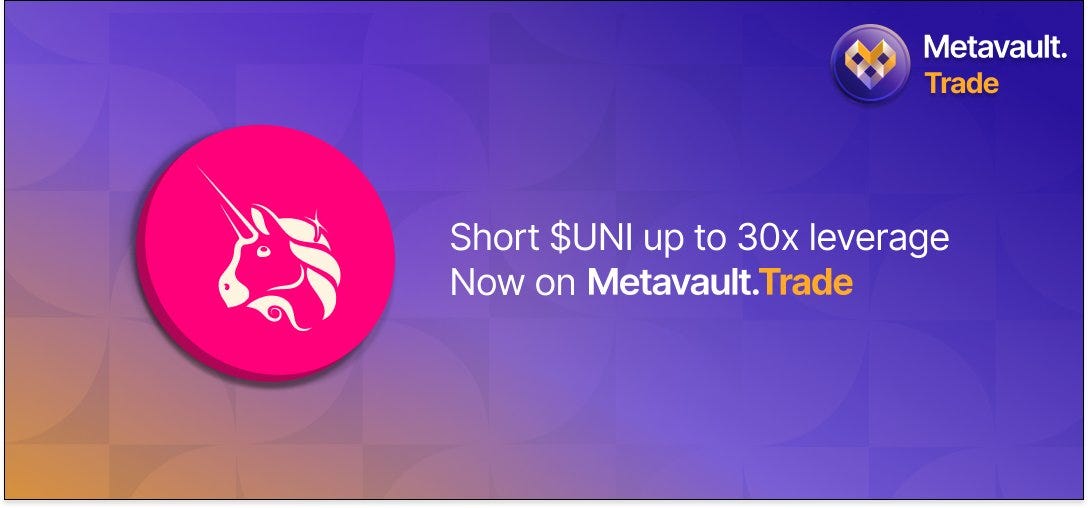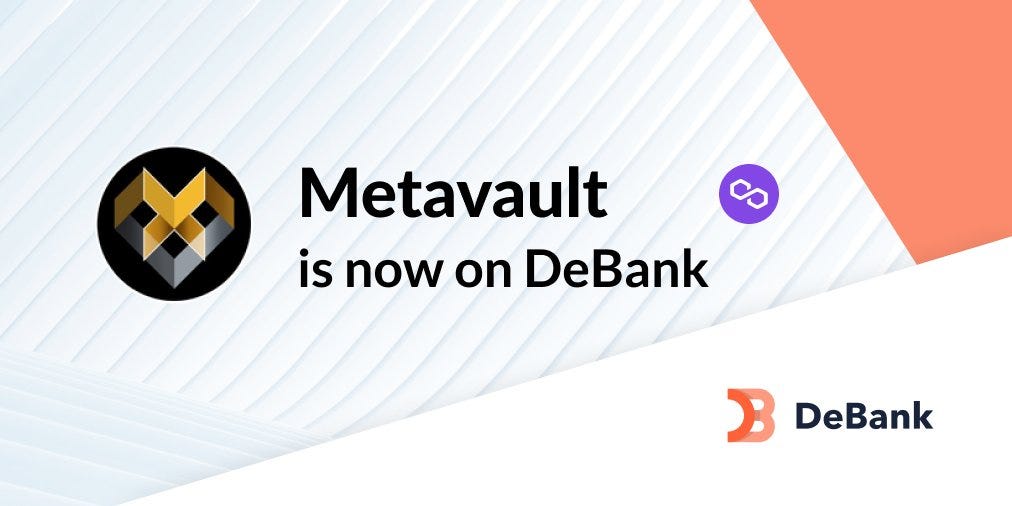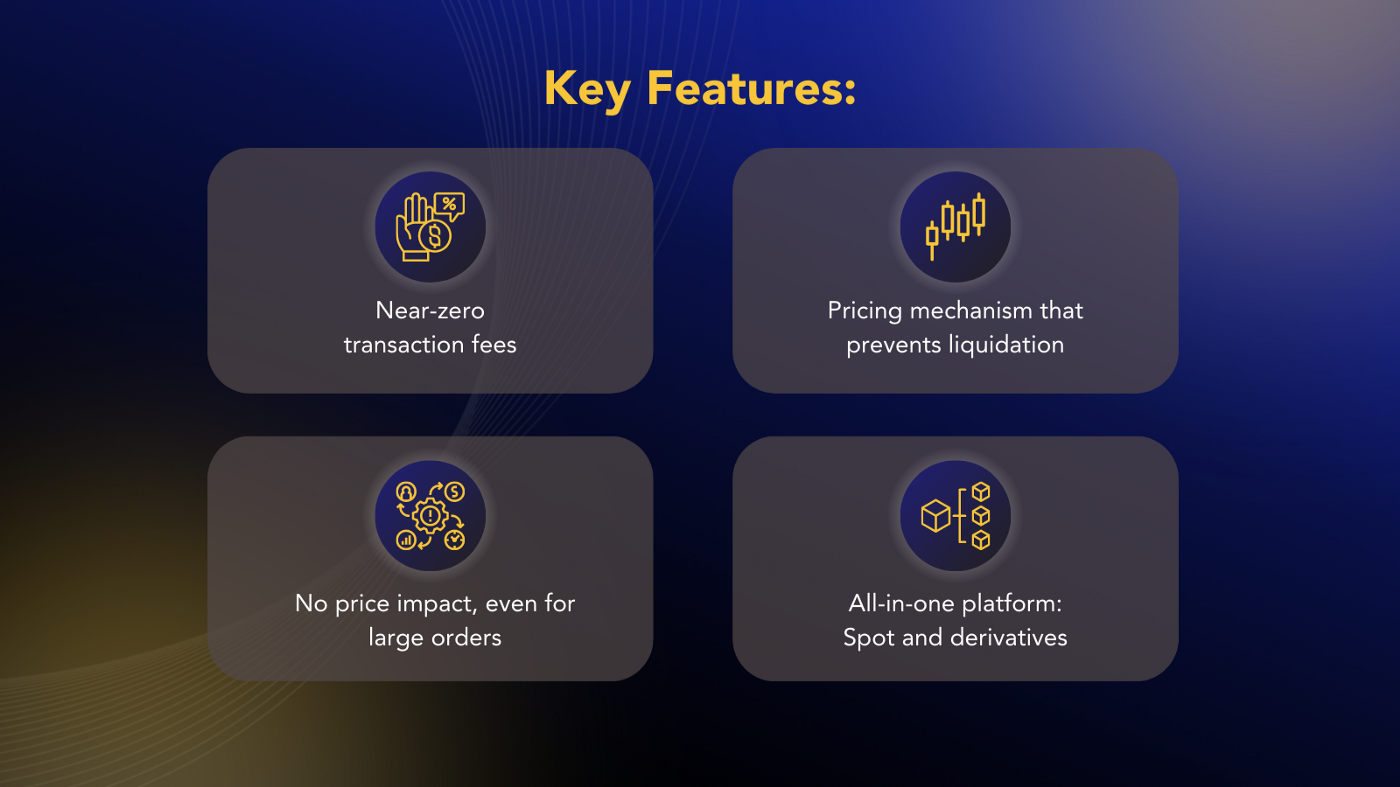
When we want to invest or spend a lot of money on something, we all have high demands for the end result and quality. And for good results, the management must be very strict and always under our control. If you are an e-marketer or your work is related to e-marketplaces, then I believe you have a good understanding of blockchain transparency and clarity.
Metavault.Trade is an exchange platform that provides decentralized crypto exchange services designed with various crypto features. Metavault.Trade provides spot & perpetual exchange services that allow users to trade with up to 30x leverage and directly from their personal wallet.
Metavault.Trade is an innovative decentralized exchange platform as it provides spot & perpetual exchange services where users can trade safely and easily without going through an account, but simply by connecting their wallet and they will be able to trade. So it is a decentralized crypto exchange platform with leverage and convenience for users.

Metavault.Trade aims to be the go-to solution for traders who want to stay in control of their funds at all times without sharing their personal data. Its innovative design gives it many advantages over other existing DEXs
Traders can use it in two ways:
Spot trading, with swap and limit orders.
Perpetual futures trading with up to 30x leverage on short and long positions.
Metavault Trade is a decentralized and perpetual exchange with low swap fees and trading without price impact. Trading is supported by multi-asset pools, which in turn are backed by liquidity providers.
Trading is supported by multi-asset pools, which in turn are backed by liquidity providers. Liquidity providers are rewarded through swap fees, market building, rebalancing and leveraged trading. MVX uses Oracle Chainlink and TWAP pricing from a large volume decentralized exchange for dynamic pricing.
Problem
Most of today's crypto users trade through centralized exchange platforms. Through this exchange platform, users will be able to trade crypto easily and safely. But the problem is that usually centralized exchange platforms use KYC for their trading which is problematic for some as it is related to their identity and privacy. Whereas users should be facilitated with a crypto trading platform that will make it easier for them to trade and not ask for their identity so that users will be able to trade freely without worrying about their privacy.
The solution
And in response to this issue, Metavault.Trade was launched as a decentralized exchange platform that would not question the identity of its users. This service is provided by Metavault.Trade is a decentralized & perpetual exchange, which will allow users to trade quickly and securely with leverage through their personal wallets. Since it only requires a connection to the user's digital wallet, it means that Metavault.Trade does not require the creation of an account for the user. Users will be able to trade their favorite pairs freely without worrying about their privacy.
Each of us, when we need to contribute or spend a lot of money on something, we have a high demand on the end result and quality. What's more, for extraordinary results, the government must be very closely and consistently under our influence.
Metavault Exchange Is A Decentralized And Endless Place Of Trading With Low Trading Fees And Zero Value Securities Exchange. The Exchange Is Sustained By A Multi-Resource Pool That Is Thus Sustained By The Liquidity Supplier.
The Exchange Is Sustained By A Multi-Resource Pool That Is Thus Sustained By The Liquidity Supplier. Liquidity Suppliers Get Compensated For Costs Of Trading, Market Making, Rebalancing And Exchange Of Influence.
Multi Group -
Resources The great progress on GMX core, and currently Metavault.Trade, is a Multi-Resource pool. Every resource powered by the platform is pooled together and a token called MVLP addresses this list of tokens.
How does this general liquidity drive reduced fees affect trade setups?
Suppose for example that the pool consists of five resources (BTC, ETH, MATIC, USDC, and DAI) in equivalent levels as far as dollar prices: 20% each. If a trader has the desire to buy half of the supply of BTC with USDC, they can do so quickly, without the impact of fees. After the request is executed, the condition of the pool will only be BTC: 10%, USDC: 30% and the rest remains unchanged.
On delivery, the resources retained in Polygon will be six large covers and three stablecoins:
BTC, ETH, MATIC, Connection, UNI, AAVE
USDC, DAI, USDT

Now how about we return to the pool in the model above. Post-trade, it was unevenly contrasted with its bottom state. Liquidity suppliers will be encouraged to hold BTC and a disincentive to hold USDC, which will encourage pool rebalancing.
What the Metavault.Trade multi-resource pool looks like — © Metavault.Trade
Metavault.Trade will also allow traders to buy or sell with up to 30x leverage on any of these resources. The main advance here is how costs are set: total Chainlink stages and the estimated Time-Weighted Normal Value (TWAP) of the main DEX and CEX. This greatly reduces the liquidation stakes of the short wick you track on a given trade.
Direct connection point to decide to go long, short or simply trade your resources — © Metavault.Trade
Alpha
As I see it, Metavault.Trade will probably be taken over by two unique types of clients:
Influencing traders who oversee the decentralized stages as well as the security of the trick axis.
Clients who need to trade a lot of resources and will track the cost of options there on some other AMM or even CEX.

Metavault Exchange Features
Low Fees - Very low transaction fees.
No price influence, even for large order sizes.
Simple Swap - Open positions via a simple swap interface. Easily swap from any supported asset to your preferred position.
Reduced Liquidation Risk - Protection against liquidation events: sudden price changes that often occur in a single exchange (“scam wicks”) are smoothed out by the design of the price mechanism.
Complete platform: spot trading and leverage.
Multi-asset pools - The key innovation at the heart of Metavault.Trade is multi-asset pools. This feature allows the platform to share liquidity across all the assets it supports.

Metavault.Trade . Ecosystem
MVLP ( Liquidity Provision Incentive) - MVLP is a liquidity token platform. Metavault.Trade requires a multi-asset pool with a lot of liquidity. To ensure this happens, the platform has a very generous incentive program: 70% of the platform fees are redistributed to liquidity providers who score MVLP by accumulating their crypto assets. MVLP acts as a counterweight to leverage traders on the platform, with their losses flowing back into MVLP.
MVX - Metavault.Trade has its own governance and utility token: MVX. Holders are incentivized to stick around for the long term, with many rewards accumulating quickly. MVX marketers will get 30% of the fees collected by the platform in the form of the network's native token — MATIC on Polygon.

The overall assessment is that the decentralized endless exchange is still very underrated as a vertical and that it will consistently capture a larger share of the crypto exchange market – largely a weakness of CEX.
This in itself would make it a task worth investigating; Apart from that, I think one thing to keep in mind about what happened with GMX: it's a huge achievement for people who are on time, either providing liquidity or buying the utility badge and stage administration, $GMX.
IMHO, Metavault.Trade allows everyone to have the opportunity to start a business with the same qualities as GMX and even with clear benefits:
It is based on Polygon, a chain where exchange is fast and simple and not difficult for onboarding clients. Also, without going into a lot of specific details, there's more to Chainlink benefits from Polygon than in active GMX chains, and it's critical to assessing and making posting new resources simpler.

Its tokenomics account for more motivation.
A delight and interest in the local area. Metavault.Trade is critical to the entire blockchain biological system and innovation project under the DAO Metavault umbrella.
© Metavault DAO
There are two methods to get involved with Metavault.Trade: the easiest is to become a liquidity supplier and score an MVLP by providing one of the listed resources
Multi-Asset Group
The great innovation at the heart of GMX, and now Metavault.Trade, is the Multi-Asset pool. All assets supported by the platform are pooled together and a token called MVLP represents the index of this token. The price of the MVLP will fluctuate with the price of the underlying asset in the basket and the traders' Profit and Loss (PnL) — when they lose a trade, their losses flow to the MVLP.
How does this shared liquidity lead to a lower price impact exchange solution? Say for example that the pool consists of five assets (BTC, ETH, MATIC, USDC and DAI) in equal proportions in terms of dollar value: 20% each. If a trader wants to buy 50% of the supply of BTC with USDC, they can do so instantly, without any price impact. Once the order is completed, the pool status will be BTC: 10%, USDC: 30% and the rest remains unchanged. To understand how unique this feature is, I encourage you to check out how much price impact you can get for very large orders on CEX with an order book or on a DEX like Uniswap!

Team
Metavault.Trade is built by professionals and experts in their field who have years of experience in blockchain technology and understand the crypto market. The team collaborated together in developing a decentralized exchange that would be used by many people globally easily and securely. With this collaboration, it is hoped that users can get the best service, where they can transact safely, quickly, and at lower costs through their devices.

Multiplier Points
The staked MVX receives Multiplier Points (MP), which allows the holder to earn a protocol fee dividend. Each multiplier points generates the same amount of MATIC as the MVX token.
The longer the MVX is staked, the more MPs the staker gets.
However, unstaking MVX or esMVX will mean the same number of multiplier points is burned. For example, if a person releases 50% of MVX, he will lose 50% MP. Reset MVX will start collecting MPs from 0.
Tokenomics and community
Metavault.Trade is built by the team behind Metavault DAO who drives the entire blockchain ecosystem and technology project.
This code is a GMX friendly fork, audited by ABDK Consulting [Find the audit here under the name 'Gambit', GMX project real name].
Since security is of the utmost importance, an independent audit will be completed soon.
After careful consideration of the GMX tokenomics, the DAO Metavault team opted for a complete redesign for Metavault.Trade. As a result, most of the tokens have been allocated to those investing in the platform (for example, staking) compared to GMX. Tokens are also launched in a fair manner, with no private spins or seeds.
Metavault DAO intends to be a liquidity provider on Metavault.Trade, which will make it strong and self-sufficient.
There is already a strong community that supports Metavault.Trade, such as those who follow it via Telegram, Twitter, and Discord channels.

Social Links
- Website: https://metavault.trade/
- Twitter: https://twitter.com/MetavaultTRADE
- Telegram: https://t.me/MetavaultTrade
- Discord: https://discord.gg/metavault
- Media: https://medium.com/@metavault.trade
- Username Kopisusu 4000 Link: https://bitcointalk.org/index.php?action=profile;u=1953415
Tidak ada komentar:
Posting Komentar